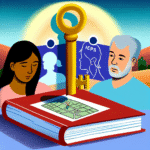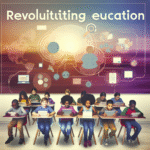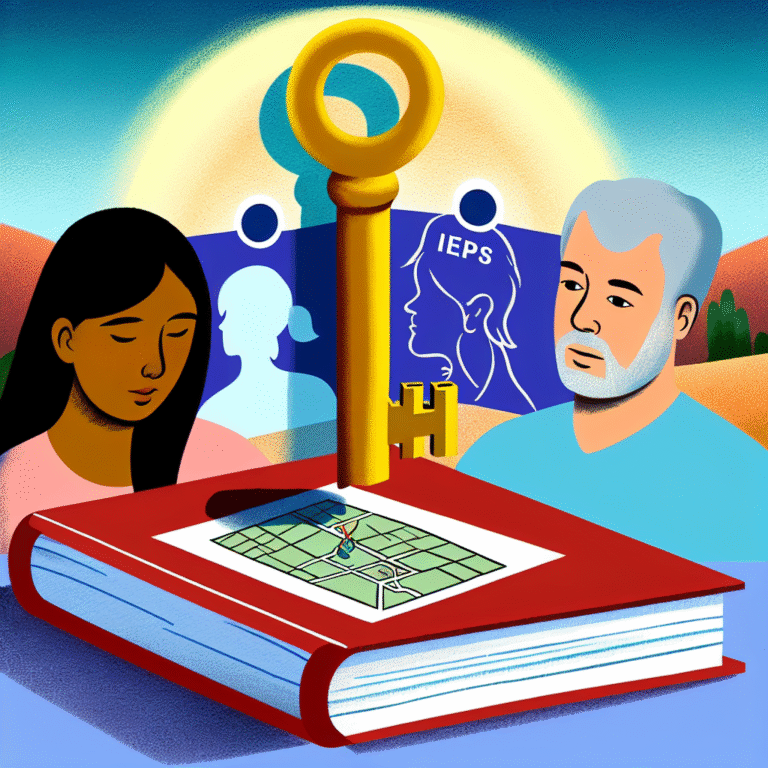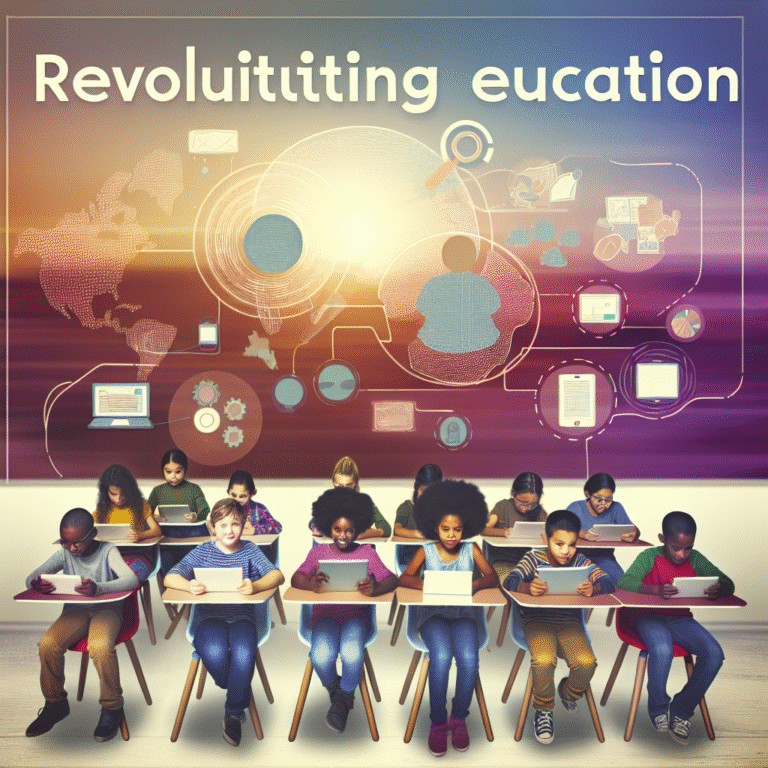
Empowering Minds: The Ultimate Guide to Supporting Students with Learning Disabilities in Academic Success
Introduction
Every student holds boundless potential, but the educational journey can take unexpected paths. For students with learning disabilities, traditional academic environments often present unique challenges that can hinder their performance and self-esteem. Empowering minds: How to support students with learning disabilities in academic success is not just a catchy phrase; it encapsulates a mission aimed at creating inclusive educational settings where every learner can thrive.
In today’s diverse classrooms, we can no longer afford to overlook the unique needs of students with learning disabilities. Understanding their challenges, advocating for tailored support, and fostering a nurturing learning environment are essential steps in empowering these students to achieve academic success. As educators, parents, and advocates, it’s our responsibility to equip them with the tools, strategies, and support systems they need to flourish academically and personally.
This article delves into proven methods and innovative practices that can empower students with learning disabilities. By leveraging real-world examples and providing actionable insights, we aim to create a comprehensive guide that will inspire and inform everyone involved in the education of these remarkable individuals.
Understanding Learning Disabilities
What Are Learning Disabilities?
Learning disabilities encompass a range of conditions that affect how individuals process, understand, and respond to information. Common types include dyslexia, dyscalculia, and attention deficit hyperactivity disorder (ADHD). These conditions can impact various cognitive functions, leading to challenges in areas such as reading, writing, mathematics, and organizational skills.
The Impact of Learning Disabilities
The barriers posed by learning disabilities can significantly affect students’ academic performance, leading to frustration, low self-esteem, and disengagement. According to the Learning Disabilities Association of America, approximately 1 in 5 children has some form of learning disability. Thus, creating an inclusive approach to education is essential for promoting academic success in this significant portion of the student population.
The Importance of Early Intervention
Recognizing the Signs
Early identification and intervention are critical. Teachers and parents should be vigilant for signs of learning disabilities, such as difficulty following directions, problems with reading or writing, and inconsistent performance across subjects. By recognizing these early indicators, support can be swiftly implemented.
Case Study: The Early Intervention Program at Lincoln Elementary
At Lincoln Elementary, teachers implemented a screening program in kindergarten aimed at identifying students at risk for learning disabilities. The data revealed that early intervention led to a 30% increase in reading proficiency scores by the end of the first grade. By focusing on tailored instruction and personalized support, the school created a framework for success that empowered both students and educators.
Analysis: This case study illustrates that early intervention not only identifies struggling students but actively improves their academic outcomes. Proactive measures can lead to significant benefits in building self-esteem and engagement.
Empowering Students Through Individualized Support
Understanding the Individualized Education Program (IEP)
An Individualized Education Program (IEP) outlines tailored educational goals and services for students with learning disabilities. The IEP process involves collaboration between educators, parents, and specialists to develop a plan that addresses specific needs.
Effective Strategies for Implementing IEPs
Collaborative Planning: Regularly involve all stakeholders, including parents, educators, and specialists, in planning IEP goals and strategies.
Progress Monitoring: Track students’ progress toward their goals, making adjustments as necessary to ensure efficacy.
- Accessible Materials: Use diverse teaching materials and assistive technologies to cater to different learning styles.
Case Study: The Success of Inclusive Practices at Jefferson High School
Jefferson High School utilized student-friendly IEPs that fostered collaboration among teachers, parents, and students. By integrating universal design for learning (UDL) principles, the school reported that students with IEPs showed significant improvement in both academic performance and social skills.
Analysis: This case study emphasizes how inclusive practices not only benefit students with disabilities but also enhance the learning environment for all students.
Teaching Strategies That Empower Learning
Differentiated Instruction
Differentiated instruction is crucial for reaching diverse learners, including those with learning disabilities. This approach allows educators to tailor teaching methods to accommodate varying learning needs.
Techniques for Differentiated Instruction
- Flexible Grouping: Change student groupings based on topics or learning styles to foster collaboration and peer learning.
- Varied Assessments: Use a variety of assessment methods (e.g., projects, presentations, written tests) to allow students to demonstrate their knowledge in ways that align with their strengths.
Case Study: Personalized Learning at Maplewood Academy
Maplewood Academy adopted differentiated instruction to meet the diverse needs of its student body. With flexible grouping and varied assessments, students with learning disabilities showed a marked improvement in their overall academic performance.
Analysis: This case study showcases how differentiated instruction creates an inclusive educational atmosphere that validates each student’s unique abilities.
Building a Supportive Learning Environment
Creating a Culture of Inclusion
A supportive classroom environment can greatly enhance the learning experience for students with learning disabilities. Establishing a culture of inclusion involves encouraging peer support, fostering respect, and celebrating diversity.
Practical Steps to Build an Inclusive Environment
Training for Educators: Provide professional development opportunities focusing on learning disabilities, inclusion strategies, and classroom management.
Peer Mentoring Programs: Establish mentorship opportunities where students with learning disabilities are paired with supportive peers.
- Positive Reinforcement: Use praise and encouragement to bolster confidence and motivation among students.
Case Study: Peer Mentoring Success at Crestview Middle School
Crestview Middle School introduced a peer mentoring program that paired students with learning disabilities with empathetic classmates. By fostering supportive relationships, students reported increased self-esteem and academic engagement over a semester.
Analysis: This case study exemplifies the transformative power of peer support in building confidence and promoting inclusivity.
Engaging Families in the Process
The Role of Families in Supporting Students
Families play a crucial role in their child’s academic journey. Their involvement can lead to stronger advocacy for appropriate resources, as well as support at home.
Strategies for Engaging Families
- Regular Communication: Maintain open lines of communication with families regarding their child’s progress and needs.
- Parent Workshops: Host educational workshops on learning disabilities to equip parents with strategies to support their children.
Case Study: Family Engagement Initiative at River Valley School District
River Valley School District launched a family engagement initiative, providing workshops and resources centered on helping families understand learning disabilities. Feedback indicated that students performed better academically when their families were actively involved.
Analysis: This case study demonstrates that engaging families can lead to improved academic outcomes and a more robust support network for students.
Leveraging Technology for Academic Success
Assistive Technology Tools
Technology plays a pivotal role in supporting students with learning disabilities. Assistive technology provides students with the tools they need to overcome challenges and access the curriculum more effectively.
Examples of Effective Assistive Technologies
- Text-to-Speech Software: Helps students with dyslexia and visual impairments by reading text aloud.
- Graphic Organizers: Aid in organizing thoughts and ideas, especially for students with writing difficulties.
- Speech Recognition Software: Allows students to compose text by speaking, thus enabling them to bypass writing challenges.
Case Study: Implementing Tech Solutions at Eastside High
Eastside High School integrated assistive technology across its curriculum. The implementation included training teachers and students alike, resulting in a noticeable improvement in engagement and academic performance among students with learning disabilities.
Analysis: This case study highlights how technology can empower students, providing them with tools conducive to their learning styles.
Conclusion
As we reflect on the various insights and strategies presented in this article, it becomes clear that empowering minds: how to support students with learning disabilities in academic success is a shared responsibility. Creating an inclusive, supportive learning environment that recognizes and nurtures individual strengths enables students with learning disabilities to thrive. With early intervention, individualized support, effective teaching strategies, and engagement from families, we can build a foundation for academic success.
By actively implementing these practices, we pave the way for a more equitable educational landscape. Each step we take contributes to a world where all students—regardless of their learning needs—can achieve their full potential. Let us commit ourselves to empowering these young minds, ensuring that every student has the opportunity to shine.
FAQs
1. What are the most common types of learning disabilities?
The most common types include dyslexia (affecting reading), dyscalculia (affecting mathematics), and ADHD (which can impact attention and focus).
2. How can parents help their children with learning disabilities at home?
Parents can create a structured routine, encourage open communication, and utilize educational resources tailored to their child’s needs.
3. What role does the IEP play in supporting students?
An IEP outlines specialized goals and accommodations necessary to support a student’s unique learning needs, ensuring access to appropriate educational resources.
4. How can teachers receive training to better support students with learning disabilities?
Many school districts offer professional development workshops focusing on learning disabilities, differentiated instruction, and inclusive teaching practices.
5. What technology can assist students with learning disabilities?
Assistive technologies, such as text-to-speech software, graphic organizers, and speech recognition, can empower students to overcome specific challenges in their learning.
By fostering understanding and nurturing the strengths of students with learning disabilities, we can transform academic experiences and pave the way for their ultimate success.






